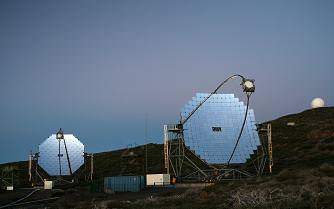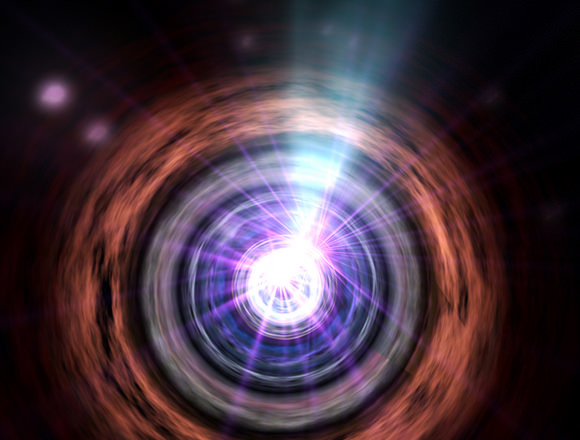[/caption]
The strength of the magnetic fields here on Earth, on the Sun, in inter-planetary space, on stars in our galaxy (the Milky Way; some of them anyway), in the interstellar medium (ISM) in our galaxy, and in the ISM of other spiral galaxies (some of them anyway) have been measured. But there have been no measurements of the strength of magnetic fields in the space between galaxies (and between clusters of galaxies; the IGM and ICM).
Up till now.
But who cares? What scientific importance does the strength of the IGM and ICM magnetic fields have?

Estimates of these fields may provide “a clue that there was some fundamental process in the intergalactic medium that made magnetic fields,” says Ellen Zweibel, a theoretical astrophysicist at the University of Wisconsin, Madison. One “top-down” idea is that all of space was somehow left with a slight magnetic field soon after the Big Bang – around the end of inflation, Big Bang Nucleosynthesis, or decoupling of baryonic matter and radiation – and this field grew in strength as stars and galaxies amassed and amplified its intensity. Another, “bottom-up” possibility is that magnetic fields formed initially by the motion of plasma in small objects in the primordial universe, such as stars, and then propagated outward into space.
So how do you estimate the strength of a magnetic field, tens or hundreds of millions of light-years away, in regions of space a looong way from any galaxies (much less clusters of galaxies)? And how do you do this when you expect these fields to be much less than a nanoGauss (nG), perhaps as small as a femtoGauss (fG, which is a millionth of a nanoGauss)? What trick can you use??
A very neat one, one that relies on physics not directly tested in any laboratory, here on Earth, and unlikely to be so tested during the lifetime of anyone reading this today – the production of positron-electron pairs when a high energy gamma ray photon collides with an infrared or microwave one (this can’t be tested in any laboratory, today, because we can’t make gamma rays of sufficiently high energy, and even if we could, they’d collide so rarely with infrared light or microwaves we’d have to wait centuries to see such a pair produced). But blazars produce copious quantities of TeV gamma rays, and in intergalactic space microwave photons are plentiful (that’s what the cosmic microwave background – CMB – is!), and so too are far infrared ones.

Having been produced, the positron and electron will interact with the CMB, local magnetic fields, other electrons and positrons, etc (the details are rather messy, but were basically worked out some time ago), with the net result that observations of distant, bright sources of TeV gamma rays can set lower limits on the strength of the IGM and ICM through which they travel. Several recent papers report results of such observations, using the Fermi Gamma-Ray Space Telescope, and the MAGIC telescope.
So how strong are these magnetic fields? The various papers give different numbers, from greater than a few tenths of a femtoGauss to greater than a few femtoGauss.
“The fact that they’ve put a lower bound on magnetic fields far out in intergalactic space, not associated with any galaxy or clusters, suggests that there really was some process that acted on very wide scales throughout the universe,” Zweibel says. And that process would have occurred in the early universe, not long after the Big Bang. “These magnetic fields could not have formed recently and would have to have formed in the primordial universe,” says Ruth Durrer, a theoretical physicist at the University of Geneva.
So, perhaps we have yet one more window into the physics of the early universe; hooray!
Sources: Science News, arXiv:1004.1093, arXiv:1003.3884

